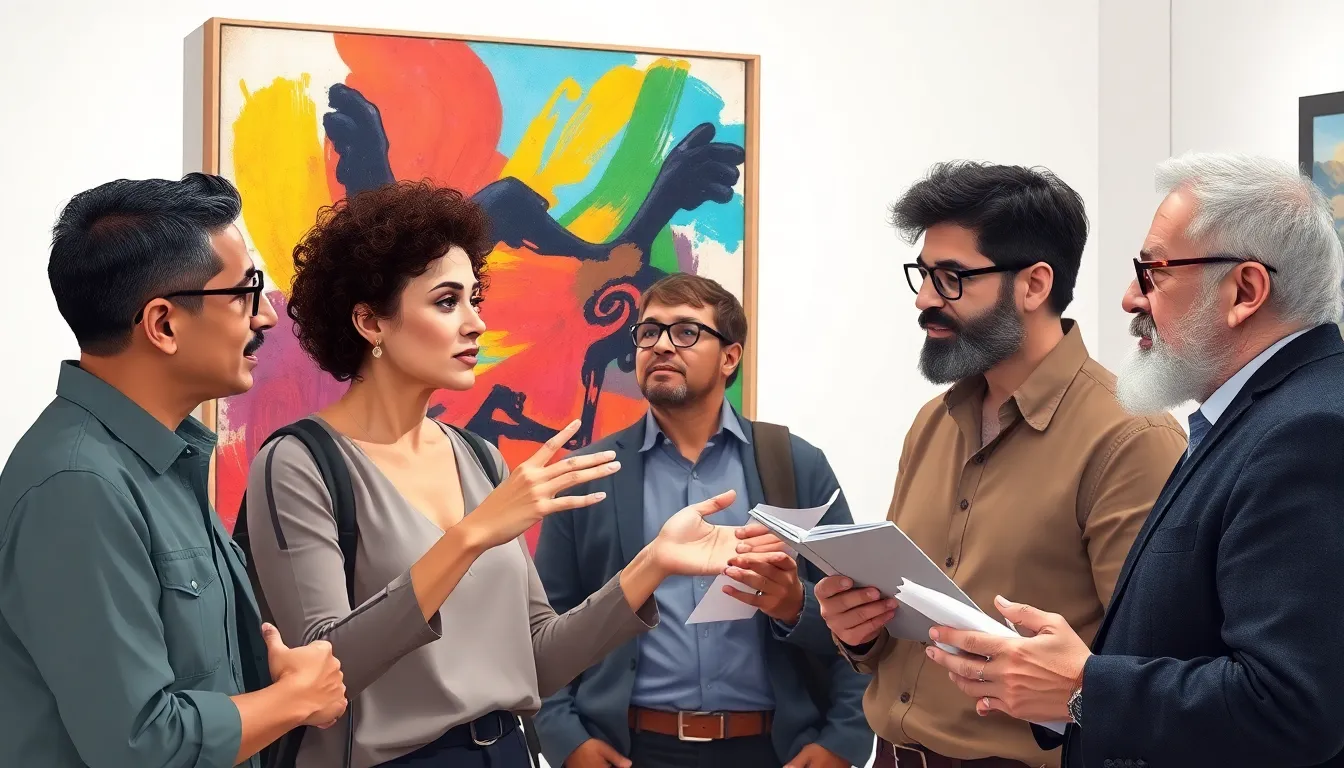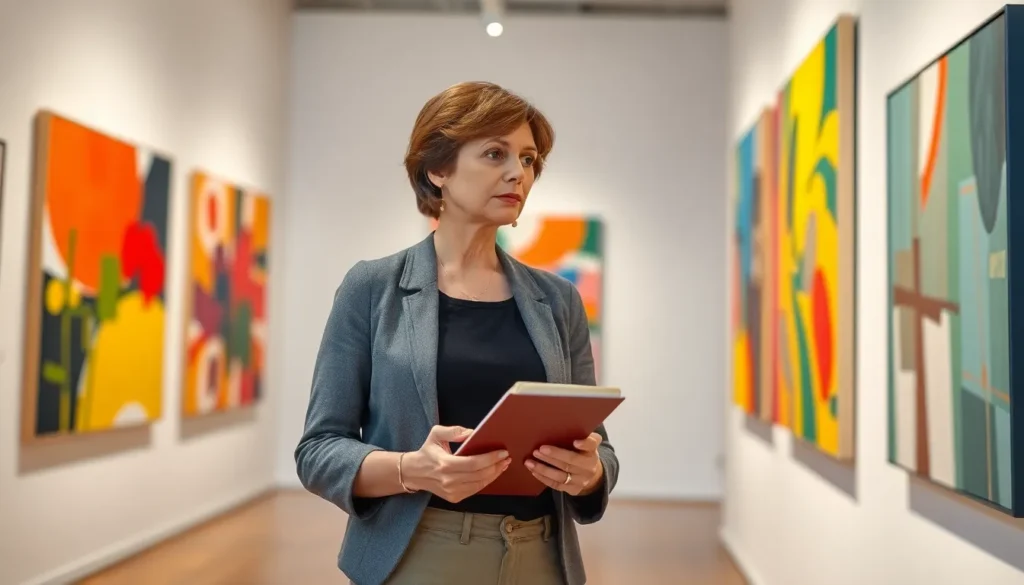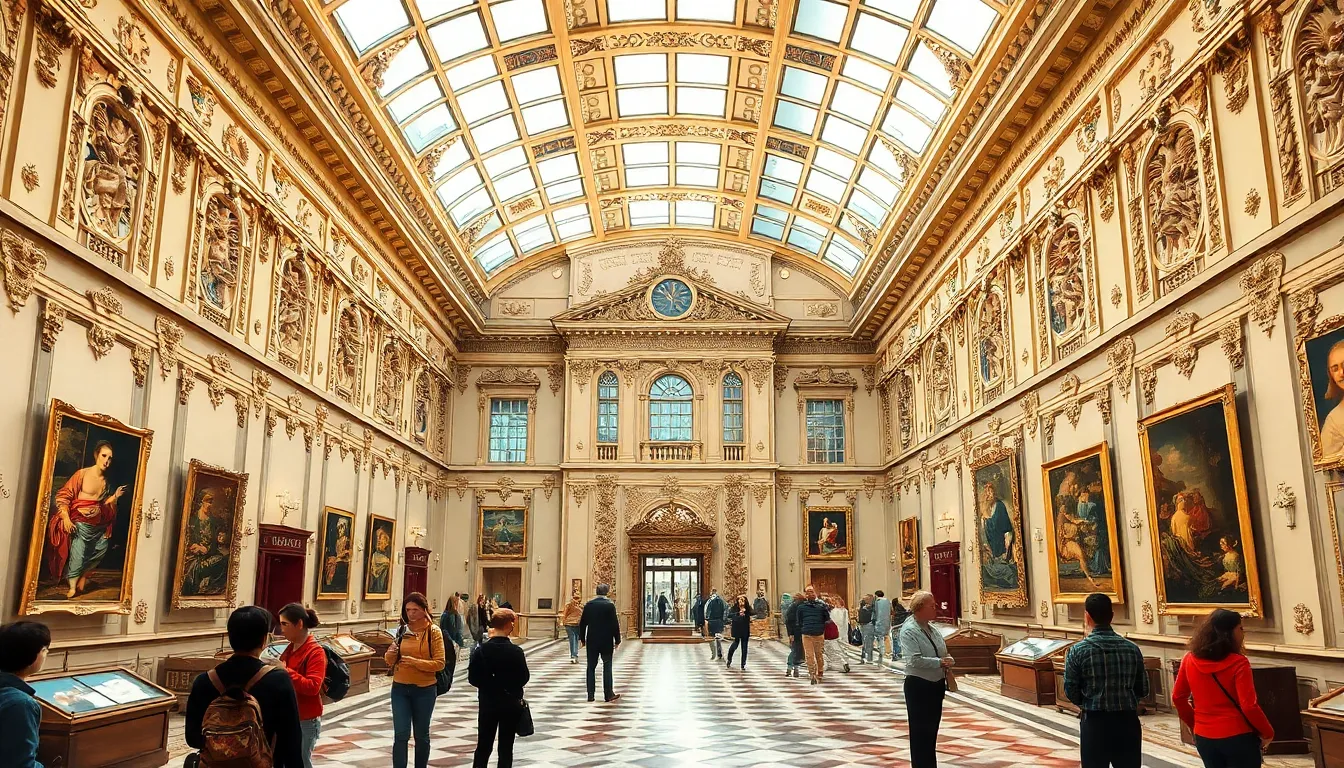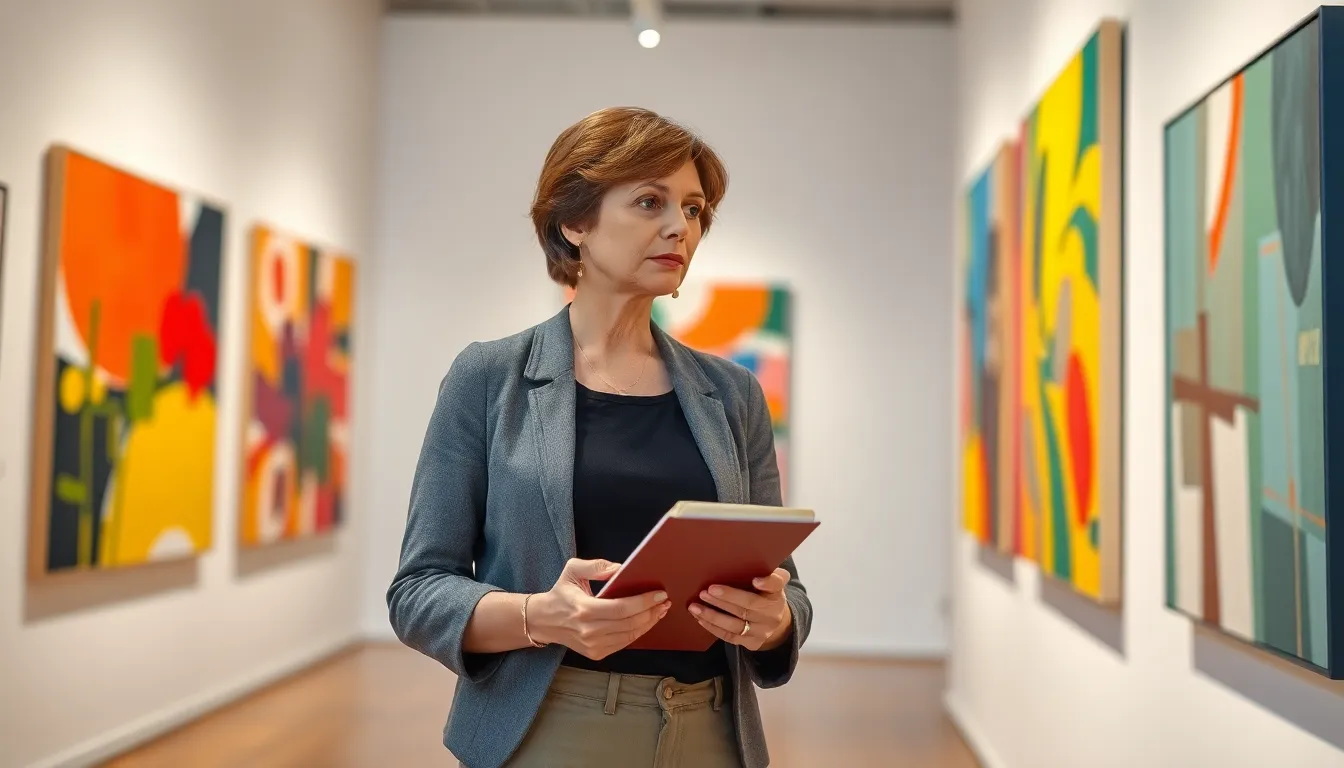Table of Contents
ToggleArt criticism isn’t just for stuffy galleries and pretentious debates; it’s the secret ingredient that spices up the world of creativity. Ever wondered why that giant canvas of splattered paint costs a fortune? Or why some folks rave about a sculpture made of old forks? Art criticism brings clarity to the chaos, helping everyone—from casual viewers to seasoned collectors—navigate the vibrant, sometimes bewildering art scene.
In a world where everyone seems to have an opinion, art critics take the plunge, diving deep into the meaning, technique, and emotional impact of artwork. They’re the friendly guides who help decode the artistic mysteries, making art accessible and enjoyable for all. So grab your beret and prepare to explore the fascinating realm of art criticism, where every brushstroke tells a story and every critique can spark a lively conversation.
Overview of Art Criticism
Art criticism plays a vital role in bridging the gap between artists and the audience. Critics evaluate artworks by considering various elements, such as technique, context, and emotional resonance. This evaluation not only fosters a deeper understanding of art but also enhances the viewer’s experience.
Art critics serve multiple functions. They interpret and analyze artworks, providing insights that highlight an artist’s intent. By unpacking complex themes and techniques, critics facilitate meaningful discussions among art enthusiasts, curators, and collectors.
The impact of art criticism extends beyond interpretation. Critics help contextualize artworks within broader cultural and historical frameworks. When examining a painting, for example, a critic might explore the societal influences that shaped the artist’s vision. This contextualization enriches viewer engagement, making art more relatable.
Several key elements define the practice of art criticism. Evaluation of form, composition, and color contributes to a comprehensive critique. Analysis of symbolism and thematic content further deepens the exploration of meaning. Reviewers often employ specific terminology to articulate their perspectives, enhancing clarity and precision in their assessments.
Art criticism also encourages diversity in viewpoints. It challenges prevailing narratives and introduces alternative interpretations, fostering a dynamic dialogue within the art community. Critics often publish reviews across platforms, from traditional print to digital spaces. This accessibility broadens the reach of their insights, encouraging a wider audience to interact with the art.
Emphasizing the importance of art criticism, it remains a crucial tool for artists and audiences alike to engage with the multifaceted world of art.
Historical Background

Art criticism has developed into a vital component of the art world, shaping how audiences perceive and engage with artworks. Understanding its history illuminates its influence.
Key Figures in Art Criticism
Notable art critics shaped the discourse, influencing perceptions of art. Individuals like John Ruskin championed the emotional and moral dimensions of art in the 19th century. In contrast, Clement Greenberg focused on formalism, emphasizing the medium’s inherent qualities. Rosalind Krauss expanded discussions by integrating feminist perspectives and postmodern theory. Each of these figures contributed unique insights, establishing diverse frameworks for evaluating art, which enriched the conversation and broadened interpretations.
Evolution of Art Criticism Practices
Art criticism practices evolved significantly alongside artistic movements. Initially, criticism was largely descriptive, highlighting technique and style. With the emergence of modernism, critics began to analyze context and meaning, delving deeper into the cultural implications of art. Contemporary criticism incorporates interdisciplinary approaches, merging insights from philosophy, sociology, and psychology. Online platforms transformed critique accessibility, allowing voices from various backgrounds to contribute. This evolution continues to promote diverse perspectives and facilitates engagement across different audiences.
Techniques and Approaches
Art criticism employs various techniques and approaches to analyze and interpret artworks, allowing viewers to connect more deeply with artistic expressions.
Formal Analysis
Formal analysis focuses on the visual elements of an artwork, examining aspects such as line, shape, color, and texture. Critics assess how these elements contribute to the overall composition and emotional impact of the piece. By breaking down an artwork into its fundamental components, critics identify patterns and relationships, revealing how an artist’s choices shape viewer perception. For example, a critic might analyze the intensity of colors used in a painting and discuss their influence on mood. This technique serves as a foundational tool for understanding the technical mastery in art.
Contextual Analysis
Contextual analysis places artworks within broader cultural and historical frameworks, providing insights into their significance. Critics consider the societal, political, and personal contexts surrounding the creation of an artwork. By exploring an artist’s background and the influences of the time period, critics illuminate connections that inform and enhance interpretation. An example includes discussing how political movements or cultural shifts impact thematic choices in certain artworks. This approach enriches viewer engagement and deepens appreciation for the narratives artists convey through their work.
The Role of the Art Critic
Art critics play a pivotal role in the art world by offering insights that enhance viewer experience and understanding.
Responsibilities and Ethics
Critics evaluate and articulate the significance of artworks through informed analysis. They consider elements such as technique, context, and emotional resonance. Upholding ethical standards is crucial; critics must remain objective and avoid conflicts of interest. Transparency in motivations protects the integrity of their assessments. Critics also strive to encourage diverse perspectives, ensuring a rich dialogue among audiences. Their responsibility includes fostering appreciation for varied artistic expressions and engaging with artists respectfully.
Impact on Artists and the Art Market
Art criticism significantly influences both artists and the market. Positive reviews can elevate an artist’s visibility and credibility, leading to increased sales and opportunities. Critics help shape public perception by contextualizing artworks within cultural narratives. Engagement with critics often sparks further discussion and exploration, benefiting the artist’s career trajectory. Furthermore, established critics can draw attention to emerging trends and artists, impacting market dynamics. With each review, they contribute to broader conversations that enhance art’s relevance and accessibility.
Challenges in Art Criticism
Art criticism faces several challenges that impact its delivery and reception in the art world. Critics navigate complexities, striving for balance between personal interpretations and universal truths.
Subjectivity vs. Objectivity
Critics often grapple with subjectivity and objectivity in their assessments. Personal taste can influence opinions, leading to biases in critiques. Establishing a standard framework helps foster consistency, allowing critics to ground their evaluations in established criteria. Examples of these criteria include artistic technique, historical context, and emotional impact. Critics should remain aware of their perspectives while striving for fair analysis. By promoting transparency, critics enhance the credibility of their evaluations, maintaining trust with their audience.
The Influence of Social Media
Social media significantly affects the landscape of art criticism today. Platforms like Instagram and Twitter enable rapid sharing of critiques and artworks, amplifying voices in the art community. Instant feedback often shapes public perception of artists, impacting their careers. Critics must adapt their approaches, embracing digital tools to reach broader audiences. The immediacy of social media presents opportunities and challenges, as trends can overshadow in-depth analysis. Navigating this environment requires critics to maintain their integrity while engaging with new audiences effectively.
Art criticism is an essential component of the art world that enhances the relationship between artists and their audiences. By providing insightful analysis and fostering diverse viewpoints, critics illuminate the complexities of artistic expression. This engagement not only enriches viewer experiences but also encourages thoughtful discourse within the art community.
As the landscape of art criticism continues to evolve with digital platforms, the importance of maintaining integrity and objectivity remains paramount. Critics play a vital role in shaping public perception and bridging gaps in understanding, ultimately making art more accessible and enjoyable for everyone. Their contributions ensure that art remains a dynamic and integral part of cultural dialogue.



